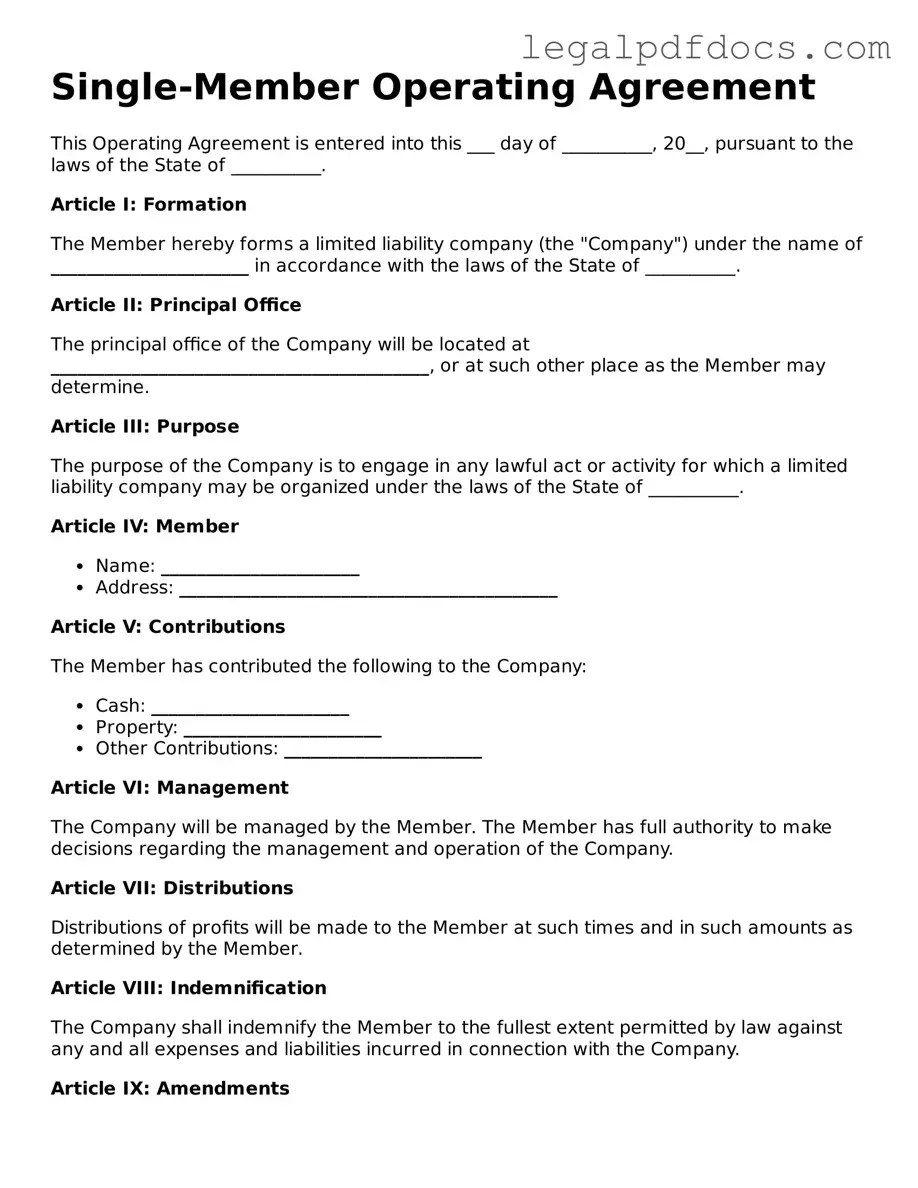Single-Member Operating Agreement Template
A Single-Member Operating Agreement is a legal document that outlines the management structure and operational guidelines for a limited liability company (LLC) with one owner. This agreement serves to clarify the owner's rights and responsibilities while providing a framework for business operations. If you're ready to establish your single-member LLC, fill out the form by clicking the button below.
Open Single-Member Operating Agreement Editor Here
